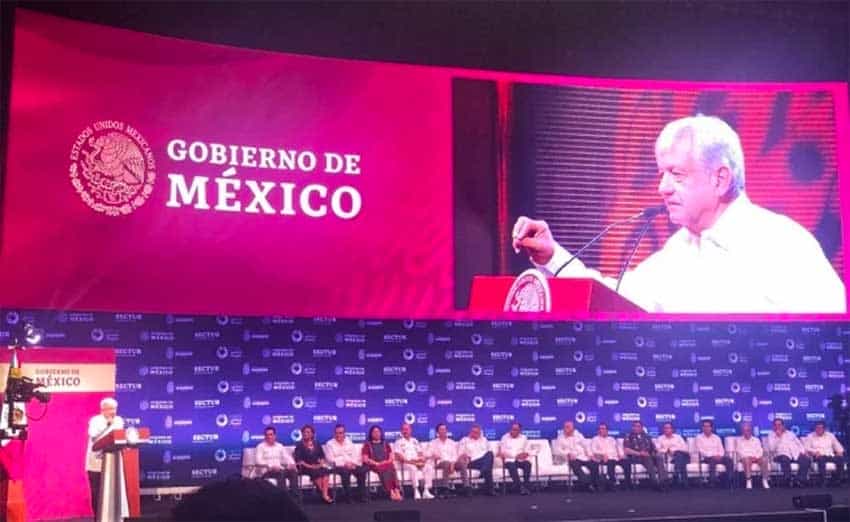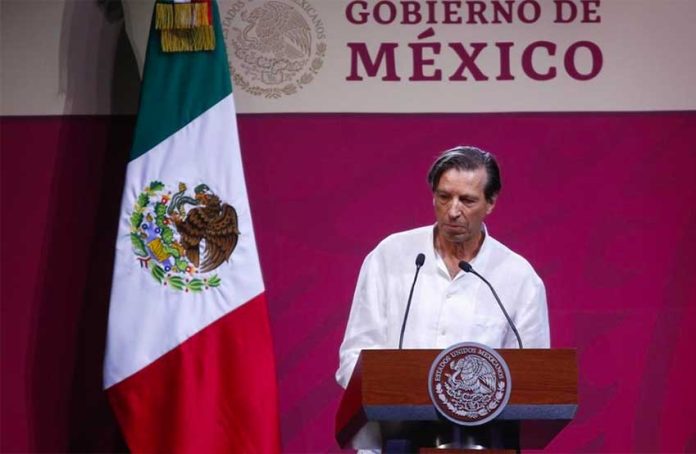A tourism sector leader has called on the federal government to provide at least US $125 million annually for tourism promotion to ensure that visitors continue to vacation in Mexico.
But President López Obrador is more focused on attending to the needs of residents in the country’s top destinations than attracting foreign visitors to them.
Speaking in Acapulco, Guerrero, yesterday at the opening ceremony of the 2019 Tianguis Turístico – Latin America’s largest tourism industry event – Luis Barrios, president of the National Association of Hotel Chains (ANCH), said that private tourism companies are investing a lot of money in marketing but it’s not enough.
He pleaded with López Obrador to not “leave us [the tourism sector] exposed” to the risk of a prolonged downturn in visitor arrivals.
As other tourism representatives have warned, Barrios said the government’s decision to disband the Tourism Promotion Council (CPTM) will result in Mexico losing market share to other holiday destinations in the region.
“Mr. [President], you are a marketing genius, you’ve taught us catchy words every time you make a speech. Now, I tell you: he who doesn’t advertise, doesn’t sell,” he said.
To fill the gap left by the disbandment of the government’s tourism marketing agency, the secretariats of Foreign Affairs (SRE) and Tourism (Sectur) reached an agreement last week that will train diplomatic staff in tourism promotion.
But there is skepticism in the tourism sector and among former tourism officials that Mexico’s embassies and consulates will be as effective as the specialist marketing agency.
“The government committed a very serious error by disappearing the CPTM because tourism competition at a global scale is very strong and Mexico doesn’t have the possibility to continue promoting itself as it did before,” said Rodolfo Elizondo Torres, federal secretary of tourism from 2003 to 2010.
He agreed with Barrios that the task can’t be solely left up to the private sector because its funding alone will fall short of the amount that is required.
The Maya Train, which will receive funding previously allocated to the CPTM, has the potential to be a great project but there are other ways to finance it, Elizondo said.

The former tourism chief’s successor, Gloria Guevara, stressed the importance of creating a body to replace the CPTM, arguing there is no point in developing new tourism products and destinations if they are not marketed.
Enrique de la Madrid, Sectur chief for the second half of Enrique Peña Nieto’s presidency, said that a lack of tourism promotion will place investment in hotels and restaurants – as well as the sector as a whole – at risk.
“If we take away tourism promotion money, the number of tourists [who come] to Mexico will fall and that’s dangerous [for the economy],” he said.
José Manuel López Campos, president of the Confederation of Chambers of Commerce, Services and Tourism (Concanaco), proposed the creation of a trust fund that combines private and public money for the purpose of tourism promotion.
“Nobody will visit a place they don’t know exists,” he said, adding that without promotion, Mexico’s tourism destinations “run the risk of becoming the best-kept secrets on the planet.”
The Concanaco chief urged the government to resume funding for the magical towns scheme, which like the CPTM is a victim of López Obrador’s program of austerity.
For his part, the president told attendees at the opening of the 44th Tianguis Turístico that his administration is focused on two main initiatives in the nation’s primary tourism destinations.
One is the 8-billion-peso (US $421.8-million) Mi México Late (My Mexico Beats) infrastructure program, which López Obrador launched last month to put an end to the “offensive” contrast between luxurious hotels and poor neighborhoods in Mexico’s most popular resort cities.
The leftist leader said yesterday that 500 million pesos (US $26.3 million) has already been allocated to Acapulco’s El Renacimiento neighborhood to improve drainage and public lighting as well as to create recreational and sporting complexes, among other projects.
Similar urban development programs are planned or under way in marginalized neighborhoods of tourism-oriented cities such as Los Cabos, Baja California Sur; Playa del Carmen, Quintana Roo; and Puerto Vallarta, Jalisco.
López Obrador said the second priority in Mexico’s tourism destinations is to improve public security, charging that “for a long time,” the violence problem was “neglected.”
Despite the government’s withdrawal of tourism promotional funding, Tourism Secretary Miguel Torruco said that investors have “complete confidence” in López Obrador and that 22,000 new hotel rooms will be built annually during his six-year term.
He also said the government will aim to attract more high-spending tourists from countries such as China, Russia and the United Arab Emirates – presumably by promoting Mexico in those countries via its embassies.
López Obrador yesterday stressed the importance of tourism to the economy – it’s one of Mexico’s biggest foreign currency earners – and has pledged that he is committed to ensuring that the sector continues to grow.
But some question how wide and serious that commitment really is.
“. . . not everything should be [focused on] the Maya Train,” said Barrios, the hotel association president.
There are already signs that tourism has declined since the elimination of the CPTM, including lower hotel occupancy rates this year in Cancún and Mexico City and a fall in international visitor numbers to Cancún in January.
The situation led National Tourism Business Council (CNET) president Pablo Azcárraga to declare last week that the Mexican tourism industry is in crisis.
He said that a lack of marketing and insecurity will cause tourism GDP growth to slow to 1.6% from 3%.
Source: Milenio (sp), El Universal (sp), El Economista (sp)
